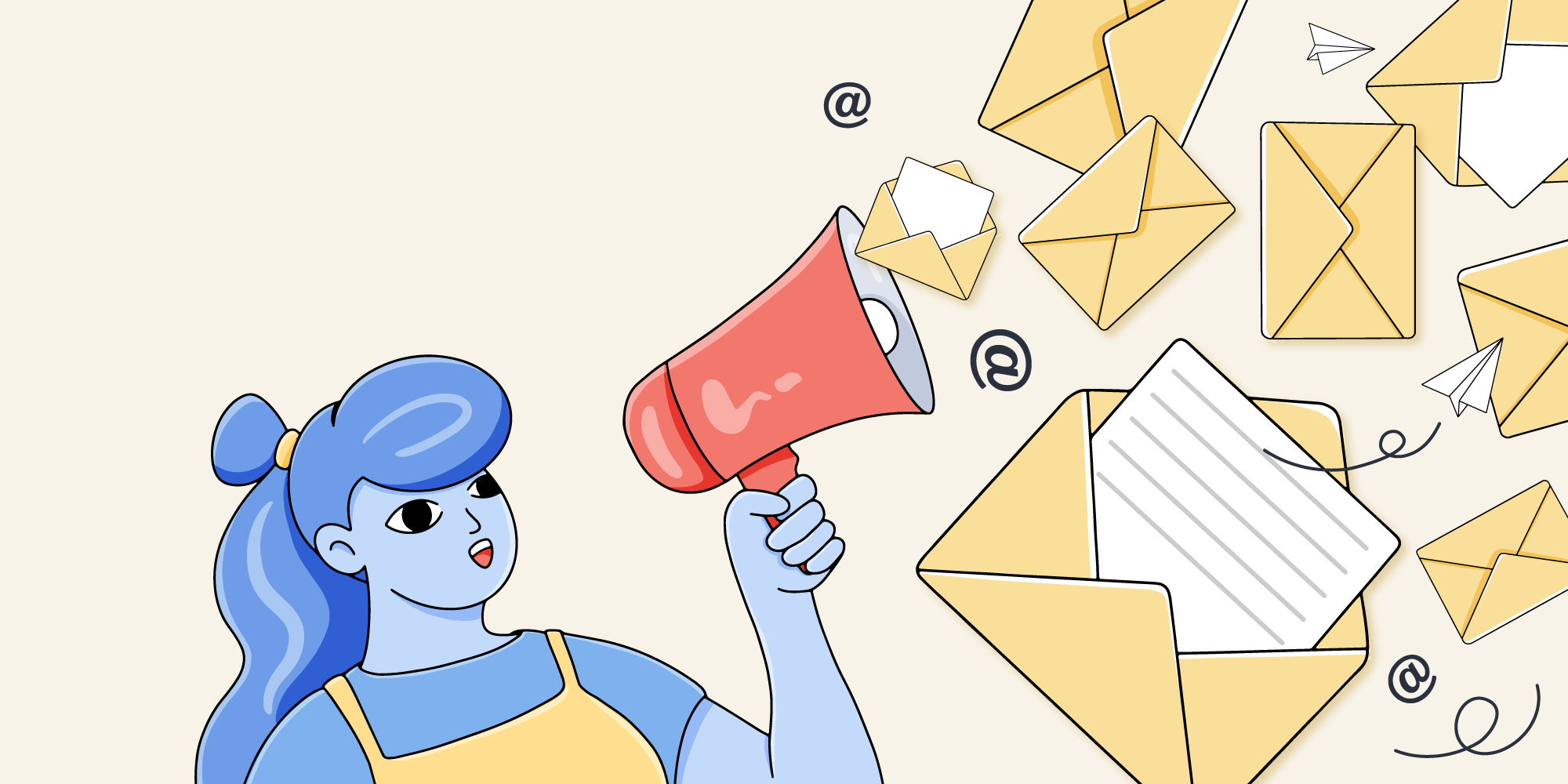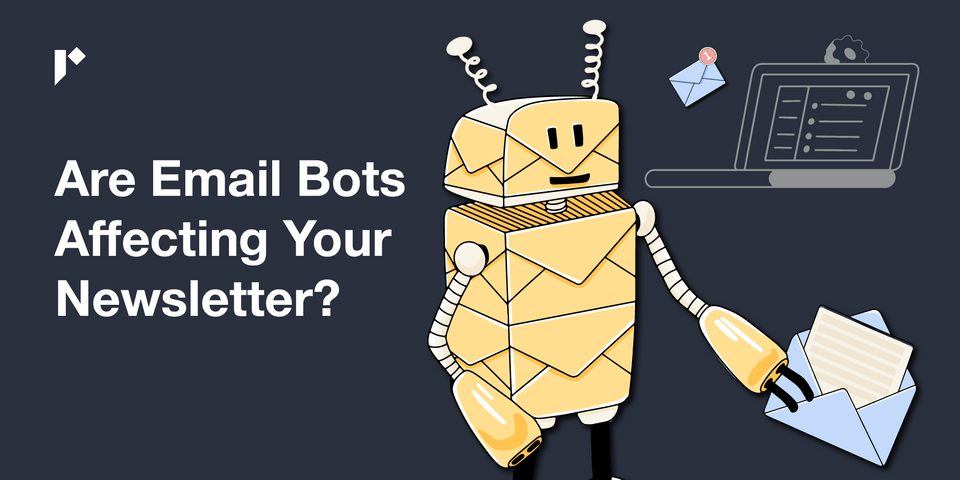You’ve crafted the perfect email newsletter. It's packed with the valuable content your potential customers need to know. In fact, it seems to be striking exactly the right message because your open rates are through the roof. You're over the moon!
But wait! Something doesn't add up in your email list. In fact, when you look closer, your metrics seem totally skewed. What’s going on?
It's time to engage your inner Sherlock Holmes and solve your newsletter mystery.
If you look hard enough, you might find that email bots are the culprits. These automated workers can unintentionally lead you astray, sending mixed messages and distorting your data.
But what is an email bot? Is it your friend or your foe? Why are email bots affecting your newsletter, and how can you fix the problem?
Let's find out.
Table of Contents
- What are bots?
- How do security bots protect your email?
- How do click bots disrupt email marketing stats?
- How do email bots impact your newsletter?
- How do email bots affect your newsletter ad campaigns?
- Who is most likely to be affected by email bots?
- How to stop email click bots
- Email bots vs human clicks
- Final thoughts
What are bots?
When I think of email bots, I always imagine tiny robots surfing the internet and diving into my inbox to see what's going on. In reality, bots aren't physical constructions. They are software applications made of code with algorithms and data structures that send them off to do specific jobs throughout the internet.
Are all bots the same?
A bot is designed to be a little digital helper, performing mundane or automated tasks faster than humans can. Most bots are legitimately helpful and work in things like customer service or data collection. Others are designed with malicious intent, like those used for hacking, spamming and phishing attacks.
Basic bots take on straightforward, pre-programmed tasks like sending an automatic email reply based on a template. More sophisticated bots may use artificial intelligence to answer complex queries. These bots learn as they go and take on multi-layered tasks. An AI bot uses machine learning, natural language processing and neural networks to understand context, so you can set it to generate relevant, personalized responses to emails while you get on with work that needs a human touch.
What is bot activity?
Bot activity is the action a bot uses to perform its assigned task as it interacts with online systems.
In the case of email newsletters, automated bot tasks might include opening emails, clicking on links and perhaps even unsubscribing.

How do security bots protect your email?
A few years ago, your inbox was probably littered with spam. Nowadays, you likely have a pristine inbox and a hidden folder of unwanted junk. That's because many email service providers (ESPs) now use bot filtering to scan incoming emails and identify spam, phishing attacks and other malicious emails.
What are email click bots and how do they work?
Email providers may also use security bots to click on links within emails to make sure they go to valid addresses. Businesses may also have them set up as part of their email security to avoid malware getting into company servers.
Bots provide an additional layer of security designed to protect you from phishing (which tries to trick people into releasing passwords and other sensitive information) and other cyber threats (e.g., nasty viruses or ransomware, which can encrypt your files and lock you out of them until you pay a ransom).
Click bots operate by automatically interacting with links in emails as if they were real users.
They can be programmed to click on all links or just specific ones within an email and may even interact with the webpage that the link directs to. Advanced click bots can mimic human behavior to avoid detection by security systems that look for suspicious or repetitive clicking patterns.
How do they affect link tracking?
Bulk email service providers like ConvertKit, Breva and Mailerlite typically change all of your newsletter links so that they point to their servers for tracking purposes. This is called link tracking or click tracking, and it allows the ESP to monitor which links are clicked, by whom, and when.
Because the security bot can't automatically tell where the link ultimately ends up, it clicks the link to confirm its validity.
All that makes it very difficult for you, as a newsletter operator, to tell whether you're getting genuine, personal interaction with your newsletter or automated security clicks.
How do click bots disrupt email marketing stats?
It's tricky to accurately measure campaign performance when you can't tell the difference between clicks from an email bot and those of a person. Bot activity can significantly inflate your email click metrics, making your campaign seem more effective than it really was.
That might mean you continue to use ineffective marketing strategies, inflate your ad spend and lose money over time.
How do email bots impact your newsletter?
Email security may have several unintentional effects on your newsletter's results. Bot clicks can:
Distort your engagement metrics
- Clicks from automated bots distort crucial engagement metrics like open rates and click-through rates (CTR). It seems as if a large percentage of your audience is opening your newsletters but really, some of that activity is due to bot clicks.
- You might end up making the wrong decisions about future newsletter content based on inflated open rates.

Twist your performance insights
Click bots can also skew performance insights, making it hard to understand what content truly resonates with readers. You may:
- Misjudge content popularity, thinking certain topics or formats are popular based on false engagement, leading to repeated use of less effective content.
- Get compromised A/B testing results if bots click on one or both versions of an email, giving inaccurate data about which version humans respond to best.
Trigger automatic sequences
You may jump to false conclusions about subscriber numbers if a bot clicks on a subscribe link. That can trigger your automatic welcome sequence, if you don't have a double opt-in set up for new subscribers, making it appear as if you have a new subscriber.
Conversely, it might hit an unsubscribe link and unintentionally lose you a subscriber.
How do email bots affect your newsletter ad campaigns?
As I mentioned before, email bots can artificially inflate your subscriber numbers, open rates and A/B testing results.
That false data can lead you to make the wrong decisions when advertising your newsletters. You might think your ads are performing better than they really are. What's more, if you're using pay-per-click ads, those bot clicks could cost you real money without bringing in potential customers.
Or, if you sell newsletter advertising space to other businesses, you might be boasting CTR numbers that don't match up with the metrics your advertisers see during their campaigns. That could impact your reputation and future ad revenue.
Who is most likely to be affected by email bots?
Businesses in certain industries like finance and health may have stringent security measures that act like email bots, checking all links and filtering out anything that looks like spam.
As far as your newsletter goes, emails you send to business addresses (especially in heavily regulated industries) are likely to be affected by click bots. Government employees are likely to have heavy security on their emails, as are educational institutions like universities.
Emails to servers like Gmail and Outlook have less protection and may be less affected.
How to stop email click bots
You can't stop security bots from doing their job but there are several things you can do to mitigate their effects on your newsletter.
You can't stop security bots from doing their job, but there are several things you can do to mitigate their effects on your newsletter.
Let's dive into some practical strategies. You could:
- Use real-time bot detection software that identifies and filters out bot activity from your email metrics.
- Enable double opt-in to ensure new subscribers are human. Email service providers usually have this option as part of their newsletter builder templates. You might also implement something like reCAPTCHA on your website to stop spam bots from signing up.
- Go through your metrics with a fine-toothed comb, checking for sudden spikes in open rates or unusually high click-through rates. Look for a high number of clicks on top links like "view in browser" because some bots are programmed to click top links but not those further down the email. If your email metrics seem too good to be true, they might indicate bots at work.
- Use unique tracking URLs for links in your newsletter, especially when they're ads. That way, you can cross-check the clicks you're seeing in your metrics with the actual traffic going to that website or landing page.
- Ensure you've set up proper authentication for your newsletter emails and monitor for "trigger words" so they don't get identified as spam.
- Implement "click delays" if you can. Some email services let you set a custom delay before counting opens or clicks. This delay can filter out the bot activity that happens immediately after the email is received.
How can you tell the difference between bot clicks and human clicks?
Stay vigilant. If you're up for a spot of analysis, you may be able to spot bots at work in your email campaign.
- Try analyzing the click patterns in your email metrics. Bots work much faster than humans so see if you can spot unusually quick click sequences from the same source.
- You may also be able to identify the bots' user-agent strings. These are small pieces of code that act like a little note to a website, letting it know what kind of browser you're using and what type of device you're on.
Here's an example from a Windows computer: Mozilla/5.0 (Windows NT 10.0; Win64; x64) AppleWebKit/537.36 (KHTML, like Gecko) Chrome/91.0.4472.124 Safari/537.36
(Translation: I'm using Windows 10 on a 64bit machine. I use AppleWebKit version 537.36 to display web pages. I'm coming from Google Chrome, version 91 and I can also handle pages like Safari does.)
And here's one from Apple; can you spot the key difference? Mozilla/5.0 (Macintosh; Intel Mac OS X 10_15_7) AppleWebKit/537.36 (KHTML, like Gecko) Chrome/91.0.4472.124 Safari/537.36.
- Bots spend very little time on landing pages after they click, so look for clicks with super-low time-on-page or bounce rates.
- Cross-reference your email analytics with website data visit tools like Google Analytics. Bot clicks often don't show up there, so you may see where the discrepancy is happening.
- Try analyzing the geographical data, too, to see if clicks are coming from the countries you'd expect them to. If your audience is mainly US-based and you see a bunch of clicks coming from unexpected locations, that could be an indication of email bots at work.
- Check for patterns, especially if you publish a round-up newsletter that includes a lot of links. Most people click on the links that seem immediately interesting or important to them, so their clicks will be random and won't form a pattern.
- For example, I might scan the whole newsletter and click your second-to-last link first. I'll read that piece and then move up to the first link (which is the next most interesting to me). There'll probably be several links I won't click at all, and I'll only examine an ad if it's directly relevant to me and my business. A bot, on the other hand, might click only the first two links, or it might dip rapidly into every hyperlink on the page. So, if you're seeing patterns like that emerge, it could be coming from email bots.
None of these ideas are foolproof by themselves; you need to put several together and look for trends.
Remember, some level of bot activity is normal. Without security bots, our inboxes would be flooded with unwanted junk (or worse.) You're looking for abnormally high activity over time to see if bot clicks are affecting your metrics (and your subsequent decisions.)
Final thoughts
So, are your readers' email providers affecting your newsletter stats with their diligent little bots?
Yes, it's likely they are to some degree. If most of your customers get their emails sent to their personal addresses on email servers like Gmail, Outlook, or Yahoo, you may see less distortion because they have less security, so bots won't be trawling through every hyperlink.
But if your newsletter mostly goes to work emails, it may be a very different story and bot filtering might play a major part in distorting your stats.
You can't stop them, but you can stay vigilant. With a spot of good bot detection, you'll get more realistic metrics and make the right decisions about your newsletter's future content and direction.


